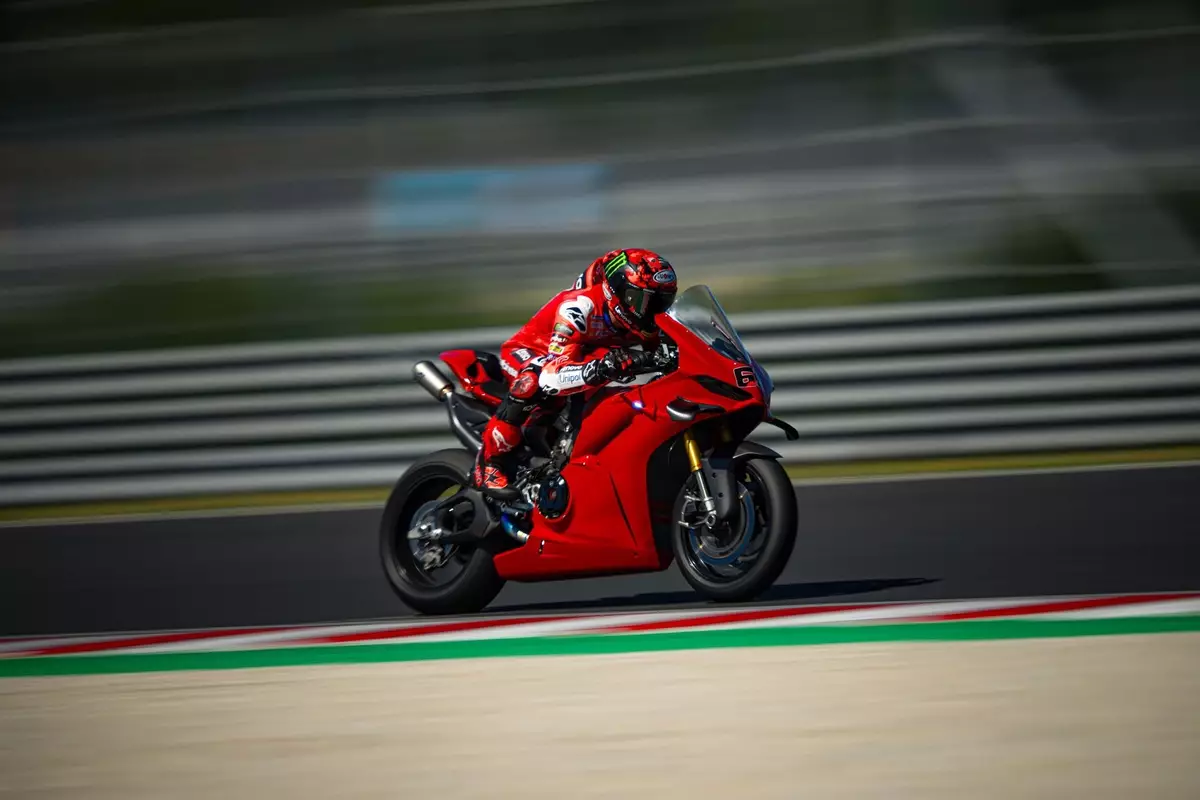In a bold move that underscores Ducati’s unwavering dominance and meticulous approach to racing, the Italian manufacturer dispatched seven of its top-tier riders to Hungary for a private testing session on the newly introduced Balaton Park circuit. This session, held mere days before the Hungarian GP’s return to the MotoGP calendar after over three decades, exemplifies Ducati’s desire not just to compete but to command the race environment from all angles. While leading the championships with apparent ease, Ducati’s decision to invest resources into this early familiarization demonstrates an acute awareness that mastery extends beyond raw speed—it hinges on understanding every inch of the new track.
This calculated effort reveals the strategic mindset within the team—a commitment to precision, control, and ultimately, victory. The fact that Ducati chose to equip its riders with a customized Panigale V4 S Pro, which closely mirrors its WorldSBK bike, signals the importance of aligning street bike technology with MotoGP aspirations. It’s a statement that Ducati is leveraging its racing DNA in every facet, blending high-performance engineering with rigorous track-time. Their approach is not merely about testing a new circuit but about setting a precedent that they are willing to outthink and outprepare their competitors, even in unfamiliar territory.
Innovative Use of Technology and Fine-Tuning
The detailed modifications made to the Panigale V4 S Pro during these private sessions reveal Ducati’s commitment to optimizing performance creatively and within regulatory boundaries. Enhancing brakes and suspension—key components that influence handling and rider confidence—indicates an understanding that success in a stop-and-go layout like Balaton requires more than just raw acceleration. It underscores Ducati’s methodical approach to data gathering and adjustment, transferring insights gleaned from street bikes to a racing mindset.
This practice raises a broader question about the relationship between street bikes and racing prototypes. Ducati’s strategy suggests that the division between the two is increasingly blurred. The Panigale V4 S Pro isn’t just a base model; it is a testbed, a miniature racing platform that allows engineers to fine-tune responses, judge chassis dynamics, and simulate race conditions all within a street bike format. Such practices ultimately accelerate development cycles and provide critical feedback ahead of the actual race, ensuring that Ducati’s riders step onto the Hungarian circuit equipped with the best possible setup.
The Significance of Balaton’s Reintroduction
Returning to Hungary’s MotoGP calendar after a 33-year hiatus is no small feat. The last race in 1992 was a historic event won by Eddie Lawson, holding a special place in the annals of motorcycle racing history. The revival of this event at Balaton Park marks a new era where nostalgia meets innovation, and Ducati is clearly positioning itself as a leading protagonist in this narrative.
The uniqueness of Balaton’s layout—highlighted by its tight chicanes, compact design, and stop-and-go rhythm—presents a different challenge altogether. It is a stark contrast to the vast, high-speed circuits where Ducati’s power palette often shines. This track demands finesse, high agility, and strategic braking—areas where Ducati’s engineers have been investing heavily. The riders’ positive initial impressions underscore that Ducati’s preparation is paying dividends, transforming potential uncertainties into opportunities for dominance.
Riders’ Insights and the Psychological Edge
The riders’ feedback paints a clear picture: the Balaton circuit is a refreshing and stimulating addition that will test their skills in new ways. Pecco Bagnaia’s candidness about enjoying the process, trying to drift the Panigale V4, embodies a mindset that embraces challenge and innovation. His enthusiasm is not just personal—it fuels team morale, instilling confidence that Ducati’s riders are psychologically prepared to adapt and excel.
Marc Marquez’s comments are equally telling. His emphasis on rhythm and the circuit’s “stop-and-go” nature highlights that success here hinges on finesse and adaptability rather than brute force. For a rider of Marquez’s caliber, this is an exciting opportunity to showcase technical skill and mental resilience. The collective positivity among Ducati’s riders signifies a strategic advantage—confidence breeds performance, especially in a race environment that favors nuanced handling over outright speed.
The Broader Implications for Ducati’s Championship ambitions
Ducati’s focus on thorough preparation for the Hungarian GP cleverly illustrates its broader championship strategy. By dedicating resources and expert attention to a race that most competitors might overlook due to its long absence, Ducati demonstrates that no detail is too small and no opportunity too insignificant. This proactive approach could well translate into crucial points at a vital juncture in the season.
Furthermore, Ducati’s engineering philosophy—emphasizing continuous development and rider feedback—is showcased vividly through these tests. Their willingness to adapt street-based machinery into race-ready contenders signals confidence that their current lead is sustainable and expandable. It’s a clear message to rivals: Ducati intends not just to defend its titles but to push boundaries further, with mastery of every circuit, old or new, as just another goal on a relentless pursuit of excellence.


Leave a Reply